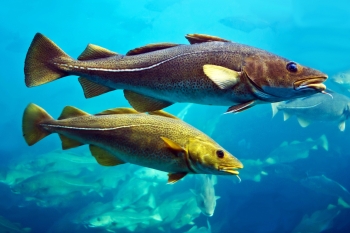Cod - July 2015

The cod season was off to a slow start in January 2015, and reduced landings caused prices to hold firm. Modest reductions in global cod landings are expected in 2015.
Global cod landings have been on a rising trend for the past decade, but in 2015 landings are expected to decline slightly. NFI expects that global landings may slip from 1.8 million tonnes in 2014 to 1.7 million tonnes in 2015. Cod quotas in the Barents Sea alone have been reduced by almost 100 000 tonnes, from 993 000 tonnes in 2014 to 894 000 tonnes in 2015.
Supplies
So far for 2015, Barents Sea cod catches were slow. Norwegian landings were down by 54% during the first six weeks of 2015, from 117 000 tonnes in 2014 to just 53 000 tonnes in 2015. Russian landings were down by 39% during this same six week period, from 38 000 tonnes last year to just 23 000 tonnes this year. US catches of cod were also down considerably when comparing these same periods. Despite these reduced landings, the global market has not reacted to the extent that one might have expected, at least not yet.
The spring cod fishery along the northern coast of Norway, the so-called “skrei” fishery, was off to a slow start this year. Most observers expect that larger volumes would be landed late in the season, just before Easter, when this fishery comes to a close. Normally, large amounts of cod are landed during January and February, but this year the cod arrived late, and consequently prices remained high in the beginning of the season.
Trade
Despite political problems in the relationship between Norway and China, there is growing interest for Norwegian cod on the Chinese market. China is already a major buyer of round frozen cod from Norway, but most of this is imported for processing and re-export to the USA and EU. In 2014, China accounted for no less than 46% of Norwegian round frozen cod exports. The NSC is now targeting Chinese consumers as cod eaters, preparing promotional campaigns with the aim to increase Chinese consumption of Norwegian cod to about 20 000 tonnes over the next five years.
The NSC reported reduced cod exports in February 2015 compared with the same month a year ago. Total whitefish exports were reduced by 33% in volume terms, however prices were up, so the reduction in value was only 9%.
Norwegian saltfish exports were down a massive 47% by volume, but strong price increases resulted in a lesser decline in value (-29%). Indeed, the average export price for saltfish increased by 33% from February 2014 to February 2015.
Other whitefish products like stockfish, klipfish, frozen cod and fresh whitefish experienced similar price increases over the past year. Stockfish prices strengthened by 31% compared with February 2014, frozen whole cod prices were up by 61%, and fresh round cod by 44%.
US imports of cod-like groundfish declined very moderately from 159 700 tonnes in 2013 to 153 900 tonnes in 2014 (-3.6%). The entire decline was registered in the fillet sector, with fillet imports decreasing from 122 000 tonnes to 116 900 tonnes (-4.2%). Imports of blocks and slabs were practically the same as 2013. The main supplier was China, which accounted for a massive 73.4% of total cod imports.
German imports of frozen cod fillets continued to rise in 2014, increasing by over 20% in 2014 compared with 2013. Total imports amounted to 30 800 tonnes, up from 25 600 tonnes in 2014. China and Poland were the dominant suppliers, shipping 12 500 tonnes and 8 000 tonnes, respectively.
Frozen cod imports also rose in the UK, which imported 90 300 tonnes in 2014, up from 87 500 tonnes in 2013 (+3.2%). China accounted for 24 100 tonnes (26.7%) of this. Other suppliers also played an important part; Iceland exported 17 100 tonnes, Norway 15 100 tonnes, and The Russian Federation 10 100 tonnes.
Prices
Cod prices increased by almost 50% between February 2014 and the beginning of March 2015, and some analysts expect prices to go even higher. However, prices are still well below the peak experienced in 2007-2008. The general consensus in the industry is that cod prices should stay firm during 2015, with the quota reduction in the Barents Sea given as the main reason.
Outlook
Overall, supplies will remain more or less at the same levels as 2014, although there will be less cod available. Although a number of the major groundfish suppliers are affected by the Russian import ban, global trade in groundfish species will only be marginally affected.
Cod prices are expected to rise during the first half of 2015, then stabilize during the second half. Foreign exchange fluctuations will affect trade as it is expected that the Norwegian krone will strengthen from its current weak position, and the weak ruble is making Russian groundfish easier to sell.

